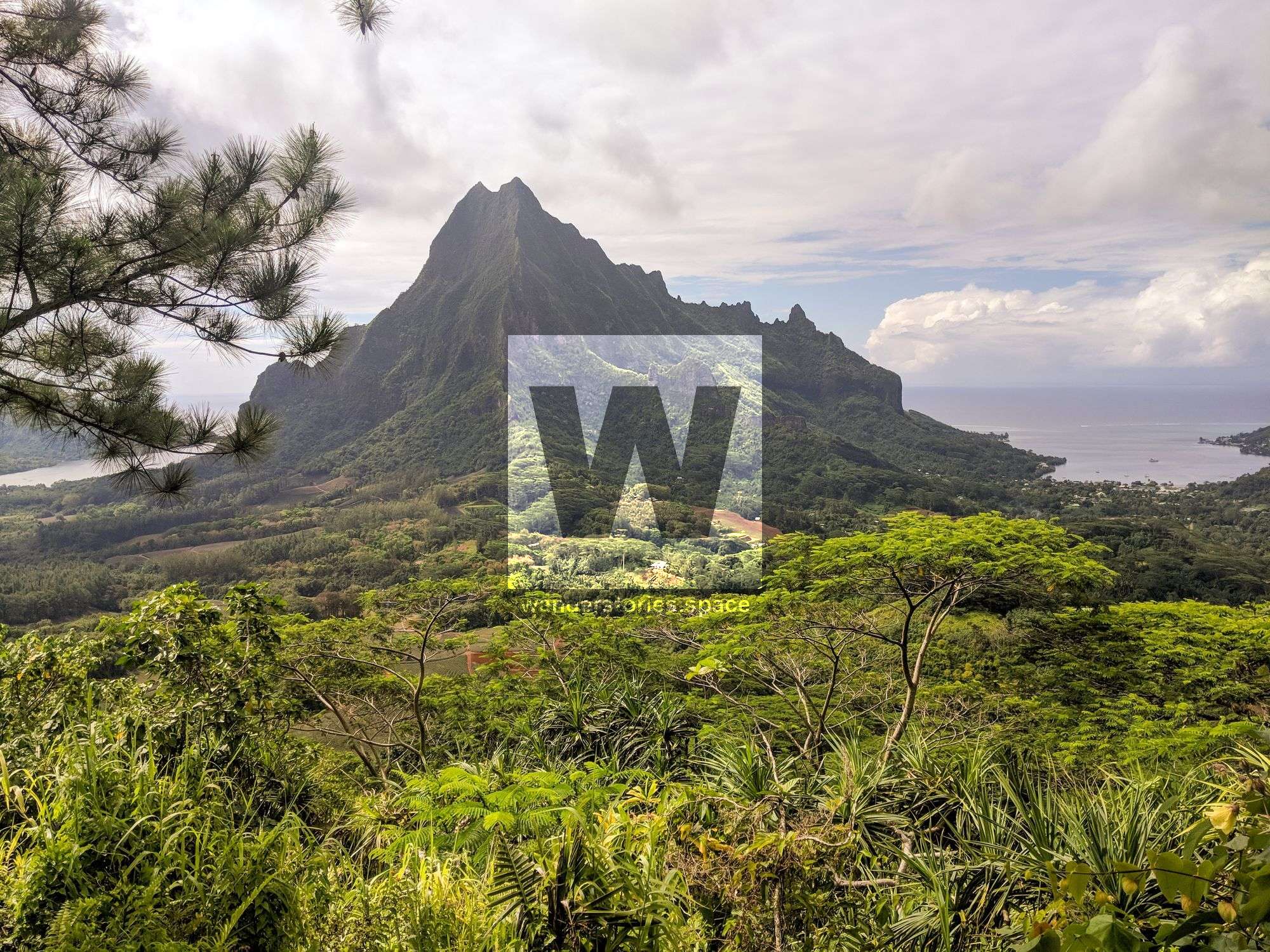Three Pines Pass (Col des Trois Pinus)
The Three Pines Pass is a short but enjoyable hike which leads up to three pine trees overlooking the pineapple fields and vast greenery of Opunohu Valley and the ancient volcano.

Location - Tupaur'uru, Mo'orea, French Polynesia; Starting at Belvédère Lookout
Duration - 2 - 4 hours return depending on route taken
Distance - 4.5 km return depending on route taken
Elevation gain - 260 m
Difficulty - Easy
The pass of the three pines, a.k.a. Three Firs Pass or Three Pines Pass, is a short but enjoyable hike which leads up to three pine trees overlooking the pineapple fields and vast greenery of Opunohu Valley and the ancient volcano. Difficulties encountered on the hike include dealing with heat and humidity. Venture into Mo'orea's lush interior along a forest trail that runs along the foot of the ancient caldera.
A hike to Three Pines Pass is a great way to spend a few hours on Mo'orea. It is a family-friendly hike. In comparison to the more well-known Three Coconuts Pass trail, this hike is shorter but slightly steeper. The hike is 4.5 km round-trip with few flat sections of the hike.
Interactive Map
The hike to Three Pines Pass (spelled Trois Pinus or Col des 3 Pinus in French) also begins at the Belvedere Lookout. The starting point can be found at southeast end of the Belvedere parking lot. The trail begins with a steady downhill section through tropical forest with several creek crossings. Interesting flora and fauna can be seen; Partula tree snail reserves, Tahitian chestnuts (mape) and Banyan trees, and some ancient archeological ruins.
The trail then ascends during the final section leading to the pass. The pass itself is merely a minor pass over a small ridge. It is not a pass in the sense of being able to see over to the other side of the island. Upon reaching the ridge, the main trail turns left and leads down to the viewpoint of Three Pines Pass. You will know you are there due to the very distinct three pine trees growing tall behind the sign. As far as views, Mount Rotui is very close and is the featured view, along with Opunohu Bay and Cook's Bay. Other major peaks are also visible as you look around the valley. Looking down, you can see the pineapple fields of the plantation below. It is possible to extend this hike into a loop by continuing downhill from the pine trees area. This extension route is the Hao Tupuna trail and it visits the fragrant pineapple fields up close as well as passes by additional archeological ruins.
Partula snails are small snails which live in trees with a life-span of up to five years. When a Partula snail is young, it tends to live in the lower parts of trees, while the adult snails will climb up to higher parts. Back in 1975, large African land snails were brought to Tahiti to be cultivated as a food delicacy. When the delicacy failed to catch on with locals, these snails were released into the wild. As a result of this, the African snails spread throughout Tahiti and the surrounding islands, including Mo'orea. Fruit plantations came under attack as the African land snails moved about the islands freely with no predators and ended up destroying crops. To combat this, a decision was made to bring an American predator snail (the rosy wolf snail) onto the islands. This plan backfired, as instead of targeting the African land snails, the rosy wolf snails began attacking the much smaller native Partula tree snails. Within ten short years, more than 100 species were brought to extinction. In 1994, attempts were made to bring back the Partula tree snails by reintroducing them into reserves on Mo'orea. The reserves were protected by corrugated metal, a salt-water moat, and an electric fence.
The Tray of the Bounty, Ancient Archaeological Trail, and Pass of the Three Pines
This article, and all other articles, are for entertainment purposes only and are not to be used as a guide. Please see our Disclaimer for more information.
